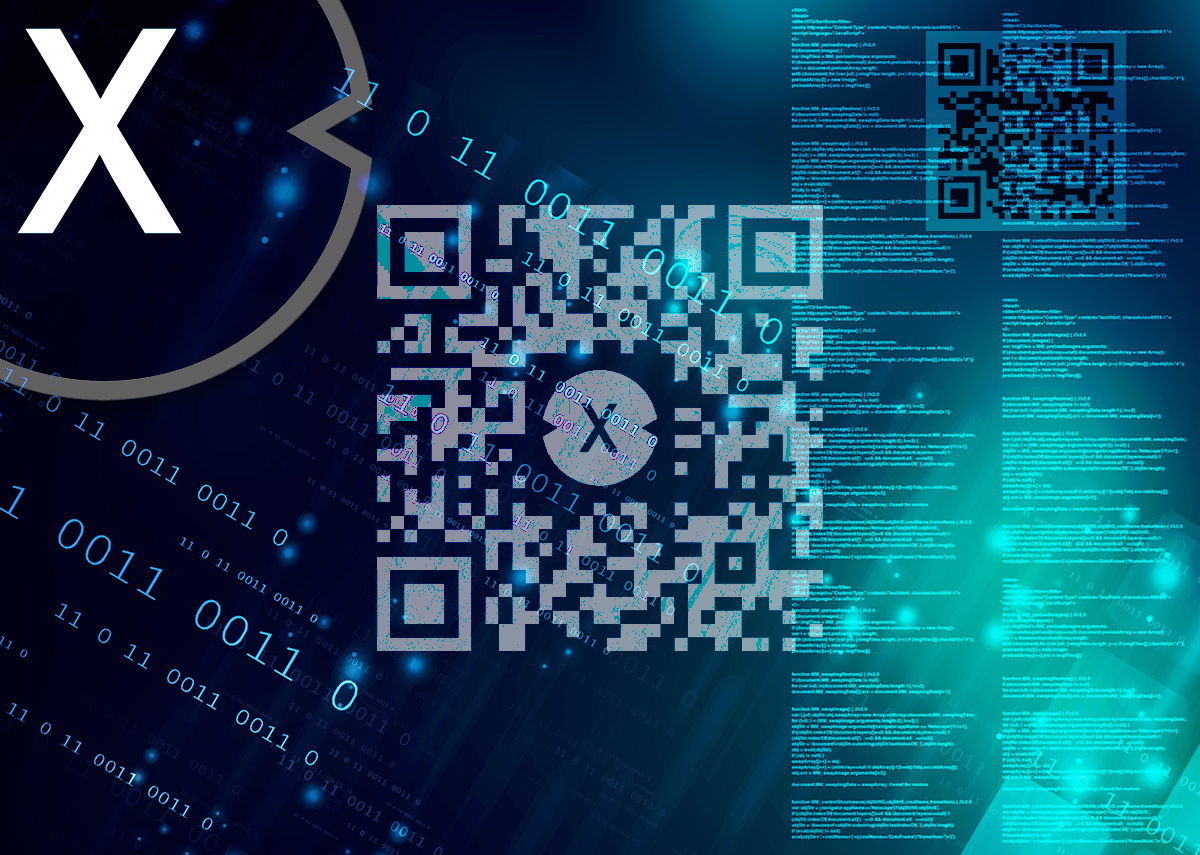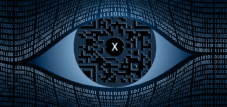The Future of Retail: How 2D Codes Are Revolutionizing Consumer Engagement
The power of 2D codes: increasing efficiency and better data management in retail
In today's technologically advanced world of retail, barcodes play a crucial role in tracking and identifying products. Most of us are familiar with the classic 1D barcodes that can be found on almost every product label. But the industry is aiming to enable the use of 2D codes alongside or instead of 1D barcodes in retail by the end of 2027. Why this step and what advantages do 2D codes offer compared to their 1D counterparts?
The choice between EAN code and 2D code
One of the main decisions brand owners face is choosing between the tried and tested EAN code (also known as UPC) and the modern 2D code. Both have their advantages and disadvantages, and the right decision depends on the specific needs of each business.
The advantages of 2D codes
2D codes offer a variety of benefits that make them an attractive option for brand owners. One of the most important advantages is product traceability and supply chain transparency. 2D codes allow detailed information about a product to be stored in a compact code that can be retrieved with a simple scan. This allows manufacturers to track a product's entire journey from production to sale and identify potential bottlenecks or problems in the supply chain.
The role of 1D barcodes
Although 2D codes undoubtedly offer many advantages, this does not mean the end of 1D barcodes. In situations where limited information is needed, 1D barcodes will continue to play a role. They are inexpensive, easy to implement, and still meet many retail needs. This means that companies that do not need to store additional data in their codes can continue to benefit from the proven 1D barcodes.
The challenges and the future
The introduction of 2D codes requires some upgrades, especially in the area of POS scanners. By 2027, most scanners should be able to easily handle both types of code. However, there is a reassuring aspect for manufacturers who currently use the EAN or UPC code. During the transition, they do not need to add additional 2D code as the existing codes can easily continue to be used.
The different types of 2D codes
There are different types of 2D codes, including the GS1 DataMatrix and the QR code. The GS1 DataMatrix uses data element syntax, while the QR code is based on GS1 Digital Link URI syntax. Choosing the right code depends on the specific requirements and use cases. Collaboration is crucial here to select the appropriate storage medium and syntax.
The role of the GS1 Digital Link
The GS1 Digital Link enables various applications and opens up new possibilities for the use of 2D codes. Especially for consumer engagement, the QR code is a popular choice due to its widespread use and awareness. Businesses can use QR codes to direct customers to informative websites, promotions, or other interactive content.
The importance of testing and barcode verification
Before deploying 2D codes on a large scale, it is important to thoroughly test their performance, size, and placement. These tests ensure that the codes can be scanned smoothly and are of high quality. Barcode verification is a crucial step to ensure that codes meet requirements and are easily recognized by POS scanners.
Traceability and transparency of the supply chain through to more efficient consumer engagement
Adopting 2D codes in retail brings many benefits, from supply chain traceability and transparency to more efficient consumer engagement. The choice between 1D barcodes and 2D codes depends on the specific needs of each business. By carefully selecting the right code, collaborating to select appropriate media and syntax, and thorough testing and verification, companies can take full advantage of the benefits of 2D code technology and gain a competitive advantage in retail.
Xpert.Plus warehouse optimization - high-bay warehouses such as pallet warehouses consulting and planning
Important information for logistics: Sunrise 2027, the Data Matrix code (2D barcode) or QR code will replace the barcode
More about it here:
The introduction of the barcode in 1973 revolutionized global logistics
More about it here:
Logistics barcode to 2D matrix code: From lines to 2D data, from sensor technology to IoT and Industry 4.0
From barcodes to global sensor technology: How logistics benefits from groundbreaking technologies – Image: Xpert.Digital
The introduction of the barcode is considered a groundbreaking milestone in the history of logistics and laid the foundation for the development of global sensor technology. The use of barcodes in logistics began in the 1970s to uniquely identify products and track their movements along the supply chain. The barcode, consisting of a series of bars and numbers, enabled efficient capture and processing of information using automatic readers.
More about it here:
The progress of 2D codes and their advantages over traditional barcodes
In this section we would like to provide an insightful overview of the fascinating world of 2D codes and show how these modern codes can outperform traditional barcodes in many ways.
What are 2D codes?
2D codes are special codes that can store data both horizontally and vertically. Compared to traditional barcodes, they offer a much greater information capacity. While traditional barcodes can only contain up to 30 characters, 2D codes have space for up to 3000 characters! This is a remarkable increase in data capacity that opens up enormous possibilities for various applications.
Space-saving solutions for small electronic components
A key advantage of 2D codes is their compact size. Although they can store a significantly larger amount of data, they only take up about 1/30 of the space that traditional barcodes require. This makes them an excellent choice for use in small electronic components where available space is limited. 2D codes allow rich information to be packed into tiny components, resulting in more efficient and intelligent use of limited space.
Built-in error correction for data integrity
Another major advantage of 2D codes is their built-in error correction based on the Reed-Solomon code. This means that even if the code is corrupted or dirty, the data can be successfully recovered. Traditional barcodes do not offer this security feature. However, 2D codes lack an additional layer of security in the form of readable characters, which can make data recovery difficult for severely corrupted codes. Therefore, it is important to implement a proper system to handle corrupt codes.
The two types of 2D codes: Stack and Matrix
There are two main types of 2D codes: the stack type and the matrix type. The stack type consists of traditional barcodes stacked vertically. This allows for a clear presentation of the data and easy capture by scanning. On the other hand, we have the matrix type, which consists of small squares or dots arranged in a grid. This enables reliable decoding from any direction using a camera or 2D CCD sensor. Both types offer a wide range of applications depending on the specific needs of a project.
Information capacity, space saving and error correction
2D codes undoubtedly represent a remarkable advancement in the world of data coding. With their amazing information capacity, space savings and built-in error correction, they offer numerous advantages over traditional barcodes. Their areas of application range from logistics to electronics to the healthcare industry. To realize the full potential of 2D codes, it is crucial to select the right type of code for the specific project and implement appropriate security mechanisms to deal with corruption.
2D Codes: Benefits for the Supply Chain and Customer Experience
The world of barcodes has evolved, and 2D codes are about to set the new standard. This advancement offers numerous benefits for all participants in the supply chain and leads to an improved customer experience. In this section, we will look at the benefits of 2D codes and how they can increase transparency, traceability and efficiency in the supply chain. We will also look at the benefits of a dual labeling strategy, where 2D codes are temporarily combined with linear barcodes. Finally, we take a look at Wipotec's Traceable Quality System (TQS), which offers a reliable solution for food packaging.
The advantages of 2D codes
Switching to 2D codes brings numerous benefits that are revolutionizing the supply chain. First, 2D codes allow additional information to be stored that was not possible with linear barcodes. This results in a more compact representation and offers the possibility to integrate extensive data such as production date, expiry date, serial number and more. Such information is crucial for traceability and quality control.
Another key advantage of 2D codes is the improved customer experience. QR codes are now ubiquitous and make shopping more interactive and exciting. Customers can use their smartphones to scan products to receive additional information, product reviews or even personalized offers. This strengthens customer loyalty and promotes trust in the brand.
The dual labeling strategy
The dual labeling strategy is a temporary solution that combines 2D codes and linear barcodes. DataMatrix and QR code are examples of 2D codes that offer space-saving integration and high information capacity. In this way, companies can gradually switch from linear barcodes to 2D codes without having to immediately change all existing systems and processes.
This combination allows for a smooth transition while gradually leveraging the benefits of 2D codes. Supply chain communications are optimized and brands can leverage the additional power of 2D codes to improve brand experiences and strengthen customer loyalty.
The Traceable Quality System (TQS) from Wipotec
With its Traceable Quality System, Wipotec offers a reliable solution for food packaging. The TQS ensures that the quality of printing, checking and weighing is guaranteed. The use of 2D codes expands product recognition, which improves consumer protection and makes recall campaigns more efficient.
Wipotec's TQS is an end-of-line solution with a modular design that can be seamlessly integrated into existing packaging processes. This enables efficient and reliable monitoring of product quality and traceability.
Suitable for:
2D code conversion
The shift to 2D codes has fundamentally changed the supply chain and offers numerous benefits for companies and consumers alike. The additional information, compact presentation and improved customer experience are just some of the reasons why 2D codes are the new standard.
The dual labeling strategy enables a smooth transition from linear barcodes to 2D codes, maximizing the benefits of this new technology. By using Wipotec's Traceable Quality System, companies can ensure the quality of their products while improving traceability and consumer protection.
Overall, 2D codes represent an innovative solution that makes the supply chain more transparent, efficient and customer-oriented. Companies that skillfully use this technology will undoubtedly benefit from a competitive advantage and exceed their customers' expectations.
Xpert.plus-logistics advice and logistics optimization-industry expert, here with its own 'Xpert.digital Industrie-Hub' of over 1,500 specialist contributions
Xpert.Plus is a project from Xpert.Digital. We have many years of experience in supporting and advising on storage solutions and in warehouse optimization, which we bundle in a large network under Xpert.Plus.
I would be happy to serve as your personal advisor.
You can contact me by filling out the contact form below or simply call me on +49 89 89 674 804 (Munich) .
I'm looking forward to our joint project.
Xpert.Digital – Konrad Wolfenstein
Xpert.Digital is a hub for industry with a focus on digitalization, mechanical engineering, logistics/intralogistics and photovoltaics.
With our 360° business development solution, we support well-known companies from new business to after sales.
Market intelligence, smarketing, marketing automation, content development, PR, mail campaigns, personalized social media and lead nurturing are part of our digital tools.
You can find out more at: www.xpert.digital – www.xpert.solar – www.Xpert.Plus


